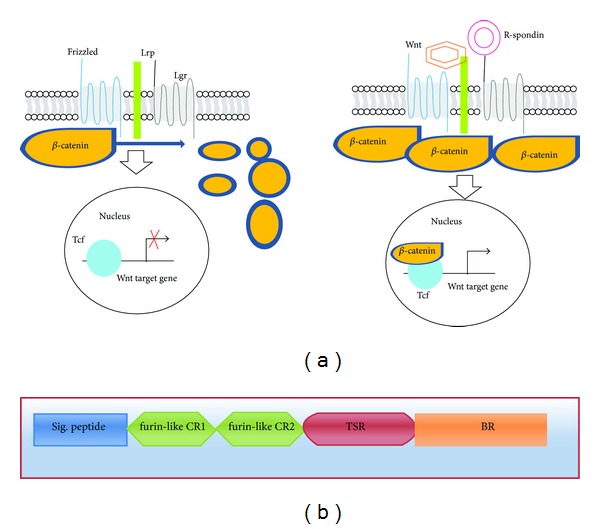Figure 1.

The role of (Rspo)s in canonical Wnt signaling pathway and the general architecture of (Rspo)s. (a) Schematic diagram of Wnt and R-spondin signaling models. In absence of Wnt ligand, constitutively synthesized cytoplasmic β-catenin is destroyed by the β-catenin destruction complex causing no β-catenin complex formation with T-cell transcription factor (Tcf)/Lef transcription factors for an active transcriptional response. Canonical Wnt signaling is instigated by the binding of Wnt ligands to the frizzled/LRP receptor complex which in turn deactivates the β-catenin destruction complex increasing its concentration in cytoplasm. The Wnt-frizzled/LRP complex-induced cytoplasmic buildup of β-catenin leads to its import into the nucleus and binding to (Tcf)/Lef transcription factors initiating transcription of Wnt targeted genes. (Rspo)s also act in similar manner but induce this unique property of enhancing Wnt activity by binding to recently discovered seven transmembrane G protein coupled receptors, Lgr (4, 5, and 6). (b) Schematic diagram shows the general domain architecture of human (Rspo)s. The architecture shows (i) signal peptide at N terminal end, (ii) two cysteine-rich furin-like repeats/domains, (iii) a single thrombospondin domain, and (iv) a basic amino-acid-rich domain at C-terminal basic region.
